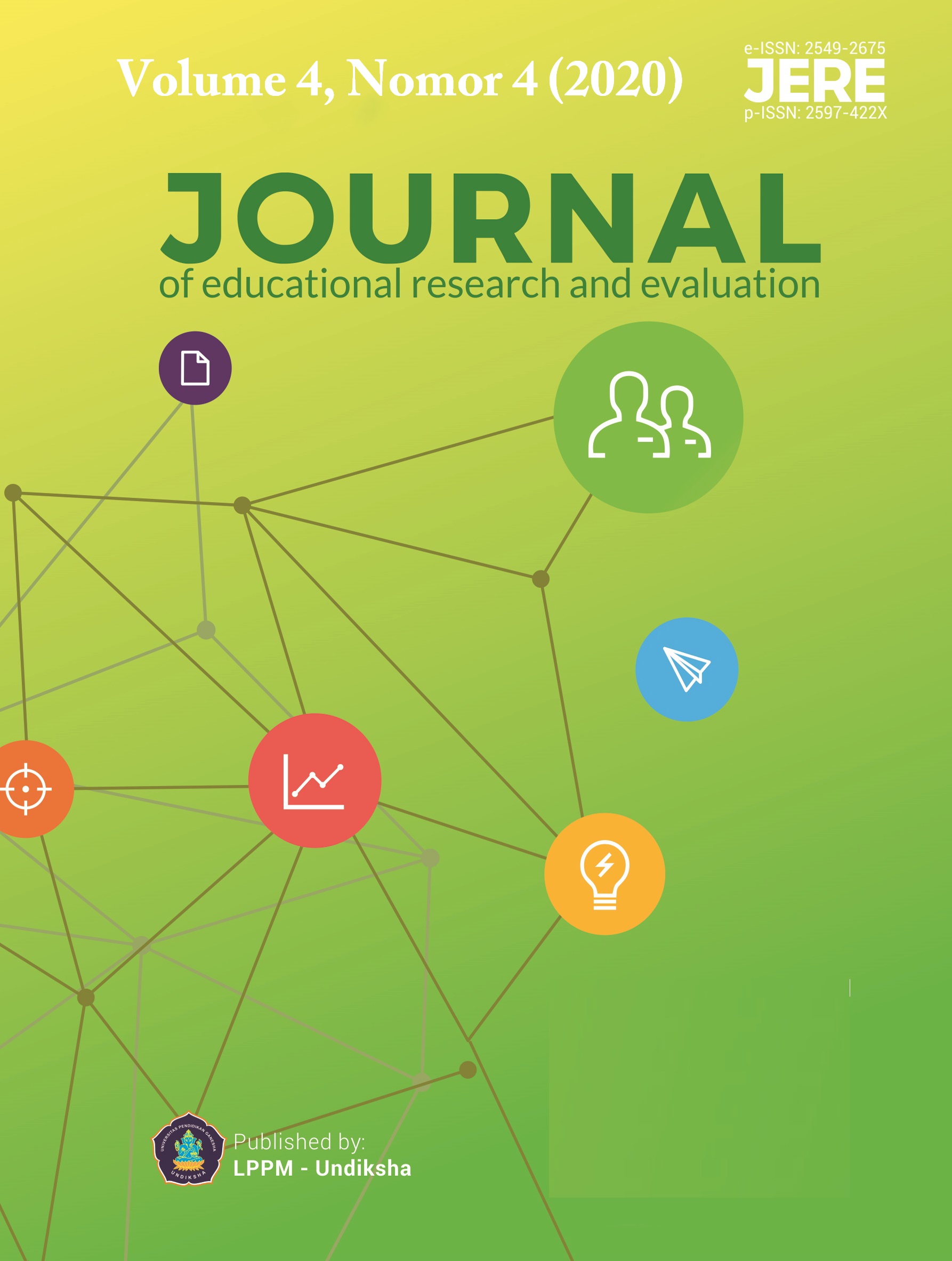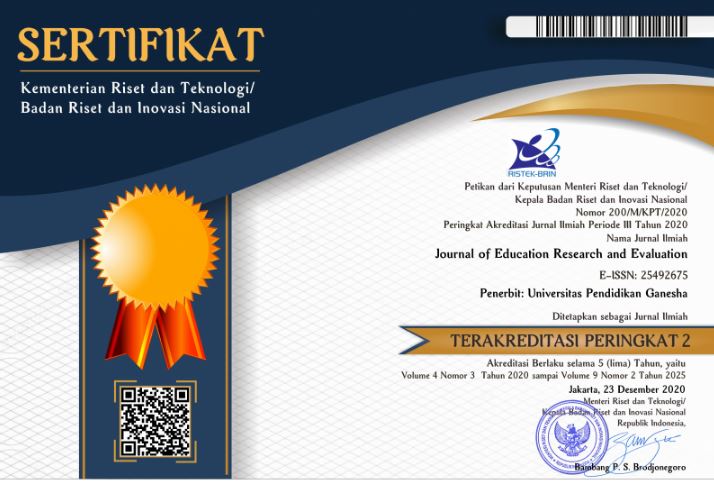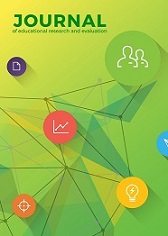The Suitability of Students in Bachelor of Science in Statistics (BSS) Program
DOI:
https://doi.org/10.23887/jere.v4i4.29217Keywords:
Psychological Tests, Bachelor of Science in Statistics, Intelligence, Numerical Aptitude, InterestAbstract
This study aims to assess the suitability of students in Bachelor of Science in Statistics program. Seemingly, several students who enrolled in the said program does not possess the qualities of being mathematically inclined. Hence, this study was conducted. By complete enumeration, the study employed all BSS students from different year level. Secondary data were used such as two psychological tests from the University Student Services Office which measures the intelligence and numerical aptitude. A primary data was also employed through an instrument called Brainard Occupational Preference Inventory which measures the interest of students in the field of statistics. The gathered data were then analyzed with the aid of some descriptive measures and correlational methods. Results revealed that there are only a few (11.9%) who have high levels of intelligence and numerical aptitude but they happen to have low level of interest in statistics. Of those students highly interested (47.6%) in the field of statistics one-fourth (11.9%) of them have low levels of intelligence and numerical aptitude. It is found out that there is a significant linear relationship between intelligence and numerical aptitude among BSS students. Moreover, intelligence and interest in statistics is inversely and significantly correlated among BSS junior students. Furthermore, results showed that there is no significant linear relationship between numerical aptitude and interest in statistics across year level. Hence, the interest of the BSS students must be cultivated in order to increase their level of achievement.
References
Ackerman, P. L., & Heggestad, E. D. (1997). Intelligence, personality, and interests: Evidence for overlapping traits. Psychological Bulletin, 121(2), 219–246. https://doi.org/10.1037/0033-2909.121.2.219
Ahmann, J. S. (1985). Otis-Lennon school ability test. Measurement and Evaluation in Counseling and Development, 17(4), 226–229. https://doi.org/10.1080/07481756.1985.12022780
Akhmetshin, E. M., Mueller, J. E., Yumashev, A. V., Kozachek, A. V., Prikhodko, A. N., & Safonova, E. E. (2019). Acquisition of entrepreneurial skills and competences: Curriculum development and evaluation for higher education. Journal of Entrepreneurship Education, 22(1), 1–12.
Bahník, Š., & Vranka, M. A. (2017). Growth mindset is not associated with scholastic aptitude in a large sample of university applicants. Personality and Individual Differences, 117, 139–143. https://doi.org/10.1016/j.paid.2017.05.046
Bennett, G. K., Seashore, H. G., & Wesman, A. G. (1956). The Differential Aptitude Tests: An Overview. The Personnel and Guidance Journal, 35, 81–91. https://doi.org/10.1002/j.2164-4918.1956.tb01710.
Benson, N. F., Floyd, R. G., Kranzler, J. H., Eckert, T. L., Fefer, S. A., & Morgan, G. B. (2019). Test use and assessment practices of school psychologists in the United States: Findings from the 2017 National Survey. Journal of School Psychology, 72, 29–48. https://doi.org/10.1016/j.jsp.2018.12.004
Bøler, E. A., Javorcik, B., & Ulltveit-Moe, K. H. (2018). Working across time zones: Exporters and the gender wage gap. Journal of International Economics, 111, 122–133. https://doi.org/10.1016/j.jinteco.2017.12.008
Brainard, R. P., & Brainard, R. T. (1956). Brainard Occupational Preference Inventory Form R. In Handbook of Psychological Tests: Theories, Admissions, Scoring, and Applications (pp. 136–140). Rex Bookstore.
Bravo, A. J., Pearson, M. R., & Kelley, M. L. (2018). Mindfulness and psychological health outcomes: A latent profile analysis among military personnel and college students. Mindfulness, 9(1), 258–270. https://doi.org/10.1007/s12671-017-0771-5
Bravo, A. J., Villarosa-Hurlocker, M. C., & Pearson, M. R. (2018). College student mental health: An evaluation of the DSM–5 self-rated Level 1 cross-cutting symptom measure. Psychological Assessment, 30(10), 1382–1389. https://doi.org/10.1037/pas0000628
Bryce, G. R., Gould, R., Notz, W. I., & Peck, R. L. (2001). Curriculum guidelines for bachelor of science degrees in statistical science. The American Statistician, 55(1), 7–13. https://doi.org/10.1198/000313001300339879
Casinillo, L. F. (2019). Factors affecting the failure rate in mathematics: the case of Visayas State University (VSU). Review of Socio-Economic Research and Development Studies, 3(1), 1–18.
Casinillo, L. F., & Aure, M. R. K. L. (2018). ). Econometric evidence on academic performance in basic calculus of science, technology, engineering and mathematics (STEM) senior high students. Journal of Educational and Human Resource Development, 6, 238–249.
Casinillo, L. F., Palen, M. A. E., Casinillo, E. L., & Batidor, P. G. (2020). Assessing Senior High Student’s Learning Experiences in Mathematics. Indonesian Journal of Educational Studies, 23(1), 44–60. https://doi.org/10.26858/ijes.v23i1.13437
Chand, K., & Darolia, S. K. (2017). A study of relationship between multiple intelligences, interests and aptitudes. Indian Journal of Health and Wellbeing, 8(11), 1340–1346. https://search.proquest.com/openview/d3c9f6d11f2e77f54aa62f147c815e2b/1?pq-origsite=gscholar&cbl=2032134
Chansky, N. M. (1966). Anxiety, Intelligence and Achievement in Algebra. The Journal of Educational Research, 60(2), 90–101. https://doi.org/10.1080/00220671.1966.10883444
Evans, W. N., Kearney, M. S., Perry, B., & Sullivan, J. X. (2020). Increasing Community College Completion Rates Among Low‐Income Students: Evidence from a Randomized Controlled Trial Evaluation of a Case‐Management Intervention. Journal of Policy Analysis and Management, 39(4), 930–965. https://doi.org/10.1002/pam.22256
Gaddis, I., & Pieters, J. (2017). The gendered labor market impacts of trade liberalization evidence from Brazil. Journal of Human Resources, 52(2), 487–490. http://jhr.uwpress.org/content/52/2/457.short
Hussar, W. J., & Bailey, T. M. (2011). Projections of Education Statistics to 2020. National Center for Education Statistics.
Kaplan, R. M., & Saccuzzo, D. P. (2017). Psychological testing: Principles, applications, and issues. Nelson Education.
Kish, G. B., & Busse, W. (1968). Correlates of stimulus-seeking: Age, education, intelligence, and aptitudes. Journal of Consulting and Clinical Psychology, 32(6), 633. https://doi.org/10.1037/h0026581
Krugman, J. I., Justman, J., Wrightstone, J. W., & Krugman, M. (1951). Pupil functioning on the Stanford-Binet and the Wechsler Intelligence Scale for Children. Journal of Consulting Psychology, 15(6), 475. https://doi.org/10.1037/h0061598
Lakens, D., Scheel, A. M., & Isager, P. M. (2018). Equivalence testing for psychological research: A tutorial. Advances in Methods and Practices in Psychological Science, 1(2), 259–269. https://doi.org/10.1177/2515245918770963
Lynn, R. (1992). Sex differences on the differential aptitude test in British and American adolescents. Educational Psychology, 12(2), 101–102. https://doi.org/10.1080/0144341920120201
Martin, V. M. A., & Beena, T. L. A. (2012). Prediction of association among numerical aptitude, programming skills, trait emotional intelligence on students performance. International Journal on Computer Science and Engineering, 4(9), 1639. http://citeseerx.ist.psu.edu/viewdoc/download?doi=10.1.1.432.3744&rep=rep1&type=pdf.
Matlin, M. W. (1999). Psychology (3rd ed.). Harcourt Brace College.
Maunah, B. (2020). Social and Cultural Capital and Learners’ Cognitive Ability: Issues and Prospects for Educational Relevance, Access and Equity Towards Digital Communication in Indonesia. Journal of Social Studies Education Research, 11(1), 165–193. https://www.learntechlib.org/p/216419/
McGrew, S., Breakstone, J., Ortega, T., Smith, M., & Wineburg, S. (2018). Can students evaluate online sources? Learning from assessments of civic online reasoning. Theory & Research in Social Education, 46(2), 165–193. https://doi.org/10.1080/00933104.2017.1416320
Montgomery, P., & Lilly, J. (2012). Systematic reviews of the effects of preparatory courses on university entrance examinations in high school‐age students. International Journal of Social Welfare, 21(1), 3–12. https://doi.org/10.1111/j.1468-2397.2011.00812.x
Mutambayi, R. M., Odeyemi, A. S., Ndege, J. O., Mjoli, Q. T., & Qin, Y. (2016). A Statistical Analysis of Students’ Attitudes Towards Statistics: A Case Study of Undergraduate Bachelor of Science Students at the University of Fort Hare. International Journal of Educational Sciences, 14(3), 294–303. https://doi.org/10.1080/09751122.2016.11890504
Nazareno, A. L., Lopez, M. J. F., Gestiada, G. A., Martinez, M. P., & Roxas-Villanueva, R. M. (2019). An artificial neural network approach in predicting career strand of incoming senior high school students. Journal of Physics: Conference Series, 1245(1). https://iopscience.iop.org/article/10.1088/1742-6596/1245/1/012005/meta
Nichols, A. H. (2011). Developing 20/20 Vision on the 2020 Degree Attainment Goal: The Threat of Income-Based Inequality in Education (1st ed.). Pell Institute for the Study of Opportunity in Higher Education.
Otis, A. S., & Lennon, R. T. (1967). Otis-Lennon mental ability test. Harcourt Brace Jovanovich Incorporated.
Pascual, N. T. (2014). Factors affecting high school students’ career preference: A basis for career planning program. International Journal of Sciences: Basic and Applied Research, 16(1), 1–14. http://www.academia.edu/download/55816217/2261-4881-1-PB_1.pdf
Proger, B. B., McGowan, J. R., Bayuk JR, R. J., Mann, L., Trevorrow, R. L., & Massa, E. (1971). The relative predictive and construct validities of the Otis-Lennon Mental Ability Test, the Lorge-Thorndike Intelligence Test, and the Metropolitan Readiness Test in grades two and four: A series of multivariate analyses. Educational and Psychological Measurement, 31(2), 529–538. https://doi.org/10.1177%2F001316447103100227
Siegel, J., & Castellan, N. J. J. (1988). Nonparametric Statistics for the Behavioral Sciences (2nd ed.). Siegel, J. And Castellan, N. J. Jr. (1988). Nonparametric Statistics for the Behavioral Sciences.2nd Edition. McGraw-Hill Company, Inc.
Siegle, D., Rubenstein, L. D. V., Pollard, E., & Romey, E. (2010). Exploring the relationship of college freshmen honors students’ effort and ability attribution, interest, and implicit theory of intelligence with perceived ability. Gifted Child Quarterly, 54(2), 92–101. https://doi.org/10.1177%2F0016986209355975
Soares, D. L., Lemos, G. C., Primi, R., & Almeida, L. S. (2015). The relationship between intelligence and academic achievement throughout middle school: The role of students’ prior academic performance. Learning and Individual Differences, 41, 73–78. https://doi.org/10.1016/j.lindif.2015.02.005
Sriyono, H. (2017). The Effect of Emotional Intelligence and Student Learning Interest on the Achievement of Economic Learning at Madrasah Aliyah in Indonesia. International Journal of Environmental & Science Education, 12(4), 2177–2183. http://www.ijese.net/makale_indir/IJESE_1985_article_5a2e4b30a75dd.pdf.
Tayaben, I., Nieva, A., Sadiwa, J. M., Masangcay, S., Collado, M. T., & Batulayan, N. S. (2015). Academic Performance and Mental Ability of Students as Determinants in Passing the Licensure Examinations for Teachers. Proceedings International Scholars Conference, 5(1), 164. https://doi.org/10.35974/isc.v5i1.1663
Weiten, W. (2001). Psychology Themes and Variations (5th ed.). Wadsworth Thompson Learning.
Xin, Y. P., Park, J. Y., Tzur, R., & Si, L. (2020). The impact of a conceptual model-based mathematics computer tutor on multiplicative reasoning and problem-solving of students with learning disabilities. The Journal of Mathematical Behavior, 58. https://doi.org/10.1016/j.jmathb.2020.100762
Zapko, K. A., Ferranto, M. L. G., Blasiman, R., & Shelestak, D. (2018). Evaluating best educational practices, student satisfaction, and self-confidence in simulation: A descriptive study. Nurse Education Today, 60, 28–34. https://doi.org/10.1016/j.nedt.2017.09.006
Downloads
Published
How to Cite
Issue
Section
License
Copyright (c) 2020 Journal of Education Research and Evaluation

This work is licensed under a Creative Commons Attribution-ShareAlike 4.0 International License.
Authors who publish with the Journal of Evaluation and Research in Education (JERE) agree to the following terms:
- Authors retain copyright and grant the journal the right of first publication with the work simultaneously licensed under a Creative Commons Attribution License (CC BY-SA 4.0) that allows others to share the work with an acknowledgment of the work's authorship and initial publication in this journal.
- Authors are able to enter into separate, additional contractual arrangements for the non-exclusive distribution of the journal's published version of the work (e.g., post it to an institutional repository or publish it in a book), with an acknowledgment of its initial publication in this journal.
- Authors are permitted and encouraged to post their work online (e.g., in institutional repositories or on their website) prior to and during the submission process, as it can lead to productive exchanges, as well as earlier and greater citation of published work. (See The Effect of Open Access)











